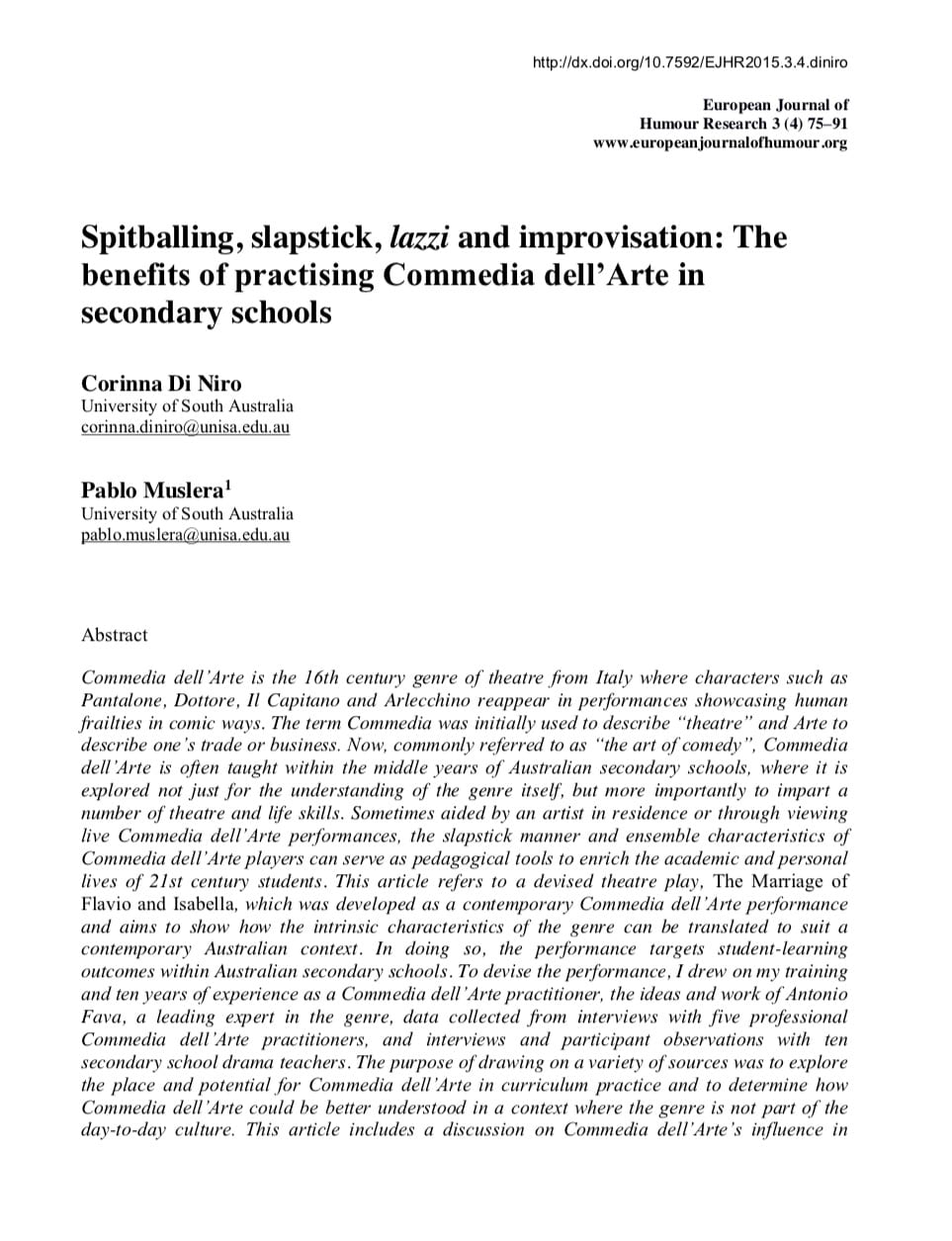Published in: European Journal of Humour, Nov 30, 2015
Commedia dell’Arte is the 16th century genre of theatre from Italy where characters such as Pantalone, Dottore, Il Capitano and Arlecchino reappear in performances showcasing human frailties in comic ways.
The term Commedia was initially used to describe “theatre” and Arte to describe one’s trade or business. Now, commonly referred to as “the art of comedy”, Commedia dell’Arte is often taught within the middle years of Australian secondary schools, where it is explored not just for the understanding of the genre itself, but more importantly to impart a number of theatre and life skills.
Sometimes aided by an artist in residence or through viewing live Commedia dell’Arte performances, the slapstick manner and ensemble characteristics of Commedia dell’Arte players can serve as pedagogical tools to enrich the academic and personal lives of 21st century students. This article refers to a devised theatre play, The Marriage of Flavio and Isabella, which was developed as a contemporary Commedia dell’Arte performance and aims to show how the intrinsic characteristics of the genre can be translated to suit a contemporary Australian context. In doing so, the performance targets student-learning outcomes within Australian secondary schools.
To devise the performance, I drew on my training and ten years of experience as a Commedia dell’Arte practitioner, the ideas and work of Antonio Fava, a leading expert in the genre, data collected from interviews with five professional Commedia dell’Arte practitioners, and interviews and participant observations with ten secondary school drama teachers. The purpose of drawing on a variety of sources was to explore the place and potential for Commedia dell’Arte in curriculum practice and to determine how Commedia dell’Arte could be better understood in a context where the genre is not part of the day-to-day culture. This article includes a discussion on Commedia dell’Arte’s influence in different genres and encourages a dialogue on how might the mode of performance embodied in traditional Commedia dell’Arte be translated to respond effectively to contemporary contexts, both educational and public.


